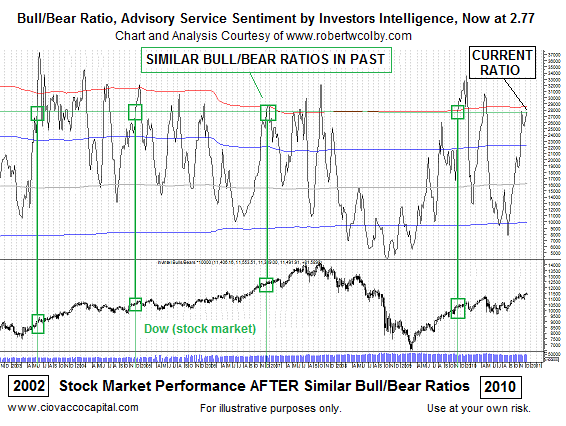The Volatility Index (VIX) Analyzing Market Sentiment Financial Web
Post on: 26 Апрель, 2015 No Comment

The Volatility Index (VIX ) is a relatively new index that captures implied volatility for the S&P 500 index options. An implied volatility uses the quoted price of a security to determine the level of volatility the market has priced. The Volatility Index represents that implied volatility for the next 30 days. The Index is a good predictor of the general level of movement in short-term stock prices.
Measuring Implied Volatility
The VIX is determined by a complex formula and the index value is published by the Chicago Board Options Exchange. The formula to calculate the VIX uses current market price quotes for all call and put options. The VIX is shown as the square root of the expected S&P 500 variance for the next 30 days, thus making it a volatility predictor since it represents expected standard deviation.
Understanding the VIX
The VIX is quoted in percentage points. It is an annualized rate of volatility. The expected volatility is multiplied by the square root of 12 to generate the value for the VIX. The reason the volatility is multiplied by the square root of 12 is that growth in volatility over time is assumed to be constant at a scale of the square root of the time unit, so converting between 30 days (1 month) and a year (12 months) has a scale factor of the square root of 12 in either direction. Since the VIX is quoted annually, but only predicts volatility for the next 30 days, it should be scaled down by the square root of 12 for practical purposes.
A Recent Example
Let us assume the VIX was quoted at 15.95. This means that the implied volatility in the S&P 500 over the next 30 days can be calculated with the following formula:
- VIX amount / (12)1/2 = percentage
- For the example, above: 15.95 percent / (12 1/2 ) = 4.604 percent
Since volatility is a standard deviation measure, 4.604 percent indicates that the S&P 500 is expected to experience a standard deviation of price movements of 4.604 percent over the next 30 days.
Volatility tracks movement, regardless of whether it is positive or negative. Because of this, the VIX is at its highest when the market expects the same magnitude of price movements in opposite directions. If half of the market believes prices will rise by a certain amount, and the other half believes prices will fall by that same amount, the VIX will be higher. If the market believes the prices will move in only one direction, the VIX will be a lower amount.
Why the VIX is Important
Volatility is a risk that all investors take on in any securities market. A lot of trading strategies are designed to minimize volatility so that the investor is protected against unpredictable movements in price. Reducing volatility is especially necessary for pension funds or retired individuals who use trading as their primary source of income because it allows them to better protect their money.
$7 Online Trading. Fast executions. Only at Scottrade














